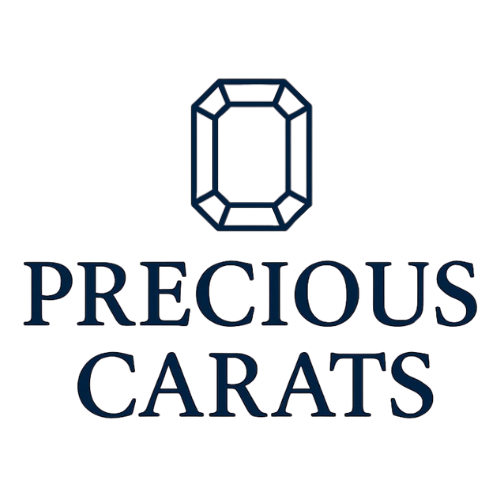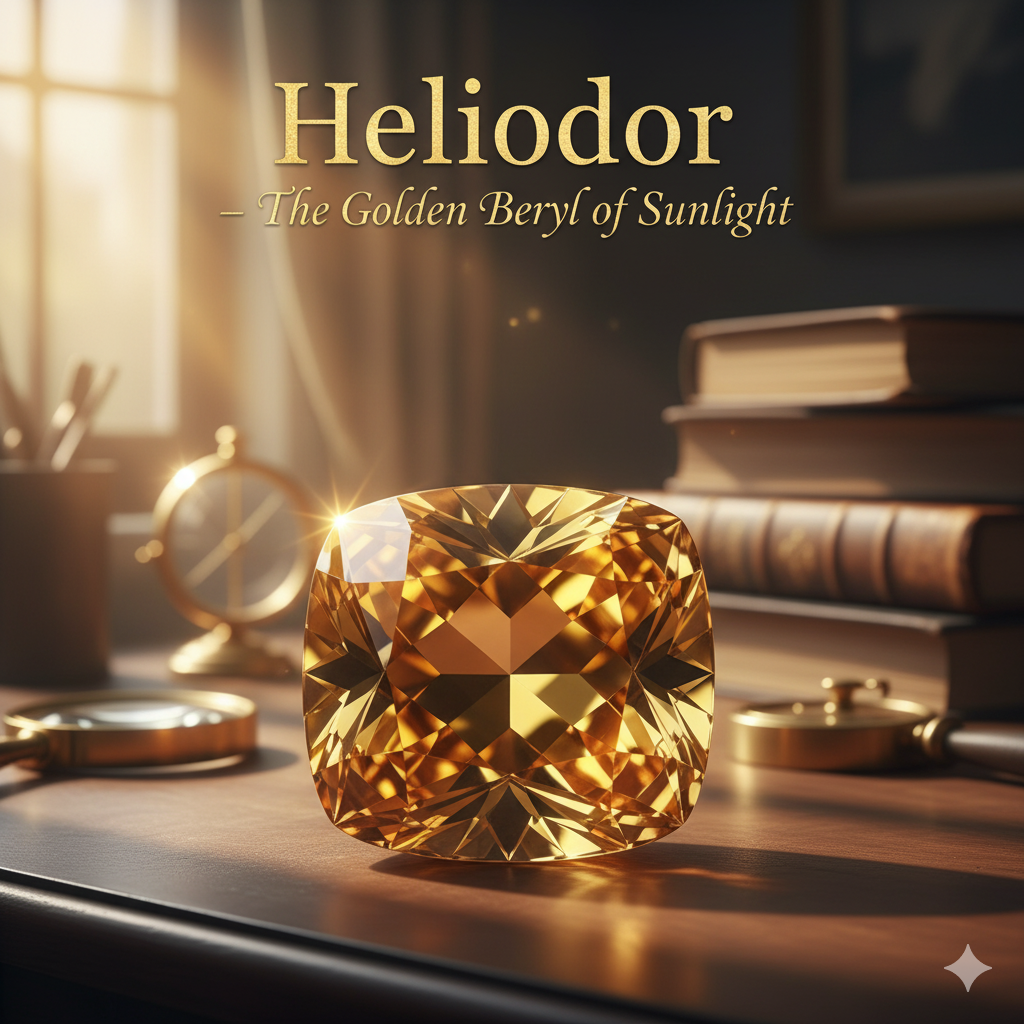Introduction
Heliodor, known as the ‘gift of the sun,’ is the golden-yellow variety of the beryl family, which also includes emerald, aquamarine, and morganite. With its radiant yellow hues that seem to capture the warmth of sunlight, Heliodor is celebrated both for its beauty and its symbolism. The name itself is derived from the Greek words helios (sun) and doron (gift), reflecting its golden glow and life-giving energy.
Discovered in Namibia in 1910, Heliodor quickly became a gemstone admired in Europe and beyond. Its connection with prosperity, vitality, and courage has made it a popular stone not just in jewellery, but also in astrology and metaphysical traditions. This blog explores Heliodor in depth — from its gemmological identity and history to its astrological significance, market value, and buyer’s guide.
Gemological Identity of Heliodor
Heliodor is part of the beryl mineral family, chemically known as Balsimo. Like other beryl’s, it forms in pegmatite deposits and exhibits a hexagonal crystal system.
Key gemological properties include:
– Colour: Yellow to golden-yellow, caused by trace amounts of iron.
– Hardness: 7.5 to 8 on the Mohs scale, making it durable for jewelry.
– Transparency: Transparent to translucent.
– Refractive index: 1.57 to 1.59.
– Pleochroism: Weak but can display golden to greenish-yellow tones depending on angle.
There is ongoing debate among gemmologists regarding the distinction between ‘yellow beryl’ and ‘Heliodor.’ Generally, lighter tones are classified as yellow beryl, while deeper, richer golden stones are termed Heliodor.
Sources and Mining
Heliodor was first discovered in Namibia in 1910 and quickly captured the attention of European jewellers. Today, it is found in several countries, though high-quality specimens remain relatively rare.
Major sources include:
– Namibia: The classical discovery site.
– Brazil: Produces both light yellow and deep golden Heliodors.
– Madagascar: An important source with commercial production.
– Ukraine: Known for fine, vibrant golden crystals.
– Nigeria, Sri Lanka, Pakistan, and Russia: Secondary sources with smaller deposits.
Heliodor forms in the same geological environments as aquamarine and emerald. Mining is often artisanal, with crystals discovered in pegmatite veins or alluvial deposits. Many Heliodors are heat-treated to enhance or stabilize their golden colour.
Historical and Cultural Significance
The name Heliodor, meaning ‘gift of the sun,’ reflects its ancient symbolism of vitality and divine energy. In Greek mythology, the sun was associated with power, life, and protection, and Heliodor came to embody these traits.
In metaphysical traditions, Heliodor has been considered a talisman for courage and prosperity. Warriors in ancient times were said to carry golden stones to imbue them with bravery. During the Art Deco period of the early 20th century, Heliodor was widely used in jewellery, especially in Europe, where its sunny brilliance perfectly complemented the geometric elegance of the era.
Today, Heliodor continues to symbolize joy, strength, and optimism. Its warm glow is often associated with positivity and the life-giving energy of the sun.
Market Value and Collectibility
Heliodor is generally more affordable than emerald or aquamarine, but fine-quality stones are still valued by collectors. Its affordability makes it attractive for jewellery buyers who want size and beauty without the high prices of other beryls.
Price ranges:( in Rs)
– Commercial stones: 1000 to 5000 per carat.
– Fine golden Heliodors: 10000 to 30000 per carat.
– Exceptional large flawless gems: can fetch higher prices depending on origin and cut.
Heliodor is often cut into emerald, cushion, or oval shapes to highlight its golden brilliance. Large crystals are common, but eye-clean stones with intense colour are less frequent, making them more desirable for collectors.
Astrological and Metaphysical Beliefs
In Vedic astrology, Heliodor is sometimes suggested as an alternative to Yellow Sapphire (Pukhraj), the gem of Jupiter (Guru). Although not considered as powerful, it is believed to bring some of the same positive effects at a more affordable price.
Astrological and metaphysical associations include:
– Encouraging wisdom, prosperity, and confidence.
– Strengthening decision-making and intellectual clarity.
– Activating the solar plexus chakra, which governs willpower and energy.
– Protecting the wearer from negativity and fear.
– Inspiring creativity, optimism, and joy.
In Western crystal healing traditions, Heliodor is considered a stone of vitality, often used in meditation to connect with solar energy and personal strength.
Buyer’s Guide to Heliodor
For those interested in acquiring Heliodor, careful selection is key:
– Certification: Always request certification to ensure authenticity, as Heliodor can resemble citrine or topaz.
– Colour: Rich, golden-yellow tones are most prized. Avoid overly pale or greenish stones.
– Cut: Emerald cut, cushion, and oval shapes are preferred to emphasize brilliance.
– Clarity: Eye-clean stones are most valuable, though some inclusions are common in larger gems.
– Treatment: Be aware of heat treatments, which are common but should always be disclosed.
– Jewellery Use: With a hardness of 7.5–8, Heliodor is suitable for rings, pendants, and earrings. Care should be taken to avoid harsh chemicals or rough wear.
For collectors, Heliodor offers an affordable yet captivating option within the prestigious beryl family. For astrologers, it serves as a secondary stone for Jupiter, carrying symbolic warmth and wisdom.
Conclusion
Heliodor, the golden beryl, is a gemstone that perfectly embodies the energy of the sun. With its radiant hues, rich symbolism, and affordability, it has secured its place as both a jewellery favourite and a collector’s treasure. While it may not command the same prices as emerald or aquamarine, its unique charm and spiritual associations make it a gem of light and joy.
For those seeking a gemstone that blends beauty, symbolism, and accessibility, Heliodor truly is the ‘gift of the sun.’

